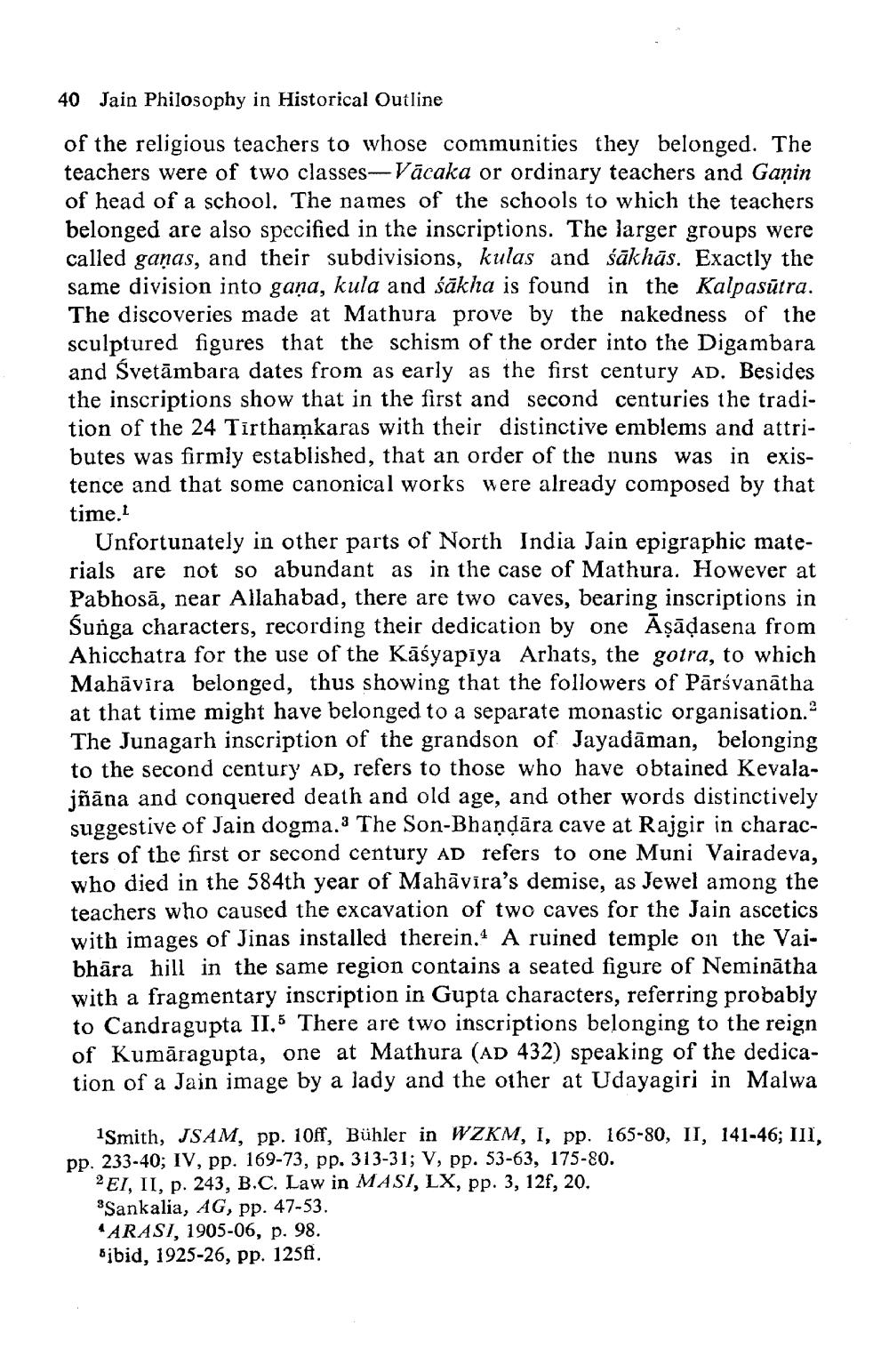________________
40 Jain Philosophy in Historical Outline
of the religious teachers to whose communities they belonged. The teachers were of two classes--Vācaka or ordinary teachers and Gamin of head of a school. The names of the schools to which the teachers belonged are also specified in the inscriptions. The larger groups were called ganas, and their subdivisions, kulas and sākhās. Exactly the same division into gana, kula and sākha is found in the Kalpasūtra. The discoveries made at Mathura prove by the nakedness of the sculptured figures that the schism of the order into the Digambara and Svetāmbara dates from as early as the first century AD. Besides the inscriptions show that in the first and second centuries the tradition of the 24 Tirthamkaras with their distinctive emblems and attributes was firmly established, that an order of the nuns was in existence and that some canonical works were already composed by that time.
Unfortunately in other parts of North India Jain epigraphic materials are not so abundant as in the case of Mathura. However at Pabhosā, near Allahabad, there are two caves, bearing inscriptions in Sunga characters, recording their dedication by one Āsādasena from Ahicchatra for the use of the Kāśyapīya Arhats, the gotra, to which Mahāvīra belonged, thus showing that the followers of Pārsvanātha at that time might have belonged to a separate monastic organisation.” The Junagarh inscription of the grandson of Jayadāman, belonging to the second century AD, refers to those who have obtained Kevalajñāna and conquered death and old age, and other words distinctively suggestive of Jain dogma.3 The Son-Bhaņdāra cave at Rajgir in characters of the first or second century ad refers to one Muni Vairadeva, who died in the 584th year of Mahāvira's demise, as Jewel among the teachers who caused the excavation of two caves for the Jain ascetics with images of Jinas installed therein. A ruined temple on the Vaibhāra hill in the same region contains a seated figure of Neminātha with a fragmentary inscription in Gupta characters, referring probably to Candragupta II,5 There are two inscriptions belonging to the reign of Kumāragupta, one at Mathura (AD 432) speaking of the dedication of a Jain image by a lady and the other at Udayagiri in Malwa
1Smith, JSAM, pp. 10f, Bühler in WZKM, I, pp. 165-80, II, 141-46; III, pp. 233-40; IV, pp. 169-73, pp. 313-31; V, pp. 53-63, 175-80.
2 EI, II, p. 243, B.C. Law in MASI, LX, pp. 3, 127, 20. Sankalia, AG, pp. 47-53.
ARASI, 1905-06, p. 98. bibid, 1925-26, pp. 125.




